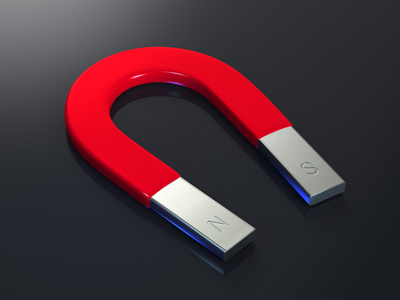
Magnets are usually made of iron.
Magnets
In KS2 Science, we explore the magic of magnets! This quiz is all about these cool objects - magnets, magnetic fields, and more.
Magnets and lodestones have something special called magnetic fields. Playing with magnets is super fun! We use them for toys, holding notes, and even in fancy machines. Guess what? Earth itself is a giant magnet, making Northern and Southern lights happen!
What sticks to magnets? Can magnets help us recycle? Test your magnet skills with this exciting KS2 Science quiz!
Quizzes: Your Ticket to Fun Learning. Dive In1.
The South pole of a magnet dangling at the end of a string would point in which direction?
North
South
Up
Down
The South pole of the magnet would point at the South Pole of the Earth and the North pole of the magnet would point towards the North Pole of the Earth
2.
How are magnets useful for separating materials for recycling?
They can separate different kinds of metals
All metals will be attracted to magnets
They can be used to attract aluminium cans
They can be used to attract all materials
Magnets attract some metals like iron and steel, but not others like aluminium
3.
Magnets are usually made of which metal?
Gold
Plastic
Copper
Iron
Lodestone, a form of iron, is a naturally magnetic material - and, although you may have plastic magnets on your fridge, this is not the right answer for two reasons: first, plastic is not a metal, and second, it is the magnetised piece of metal included in a plastic 'magnet' that makes it magnetic
4.
The South pole of a magnet will repel what?
The South pole of another magnet
Both poles of another magnet
The North pole of another magnet
Magnets never repel each other
The North pole of one magnet will repel the North pole of another magnet
5.
If you stroke a piece of iron repeatedly (and in the same direction) with a magnet, you can create what?
A permanent magnet
A soft magnet
A temporary magnet
A magnet alloy
You can try this with a pin or needle - stick your temporary magnet in a piece of cork, place it in a bowl of water and watch it point North!
6.
How might temporary magnets lose their magnetism?
If they are dropped
If they are heated
If they are hammered
All of the above
Temporary magnets also lose their magnetism over time
7.
The North pole of a magnet will be attracted to what?
The North pole of another magnet
The South pole of another magnet
Both poles of another magnet
Magnets are not attracted to each other
The South pole of one magnet will be attracted to the North pole of another magnet
8.
When a magnet exerts a pulling force on a material, it 'attracts' the material. What do magnets do when they exert a pushing force on a material??
They create friction with the material
They align with the material
They create electricity with the material
They repel the material
The pushing and pulling forces exerted by magnets are called 'attraction' and 'repulsion'
9.
Electromagnets are temporary magnets. How do we get them to work?
By pointing them north
By placing them inside a thunderstorm
By switching them on
By pointing them south
Electromagnets are very powerful temporary magnets - they are created by allowing electricity to flow through wire coiled around iron or steel
10.
Which one of the following does not depend on magnets in order to work?
A compass
Scissors
Modern roller coasters
Electric motors
Did you know that magnets are used to slow roller coasters down and that magnetic repulsion is sometimes used to make roller coasters speed up?
**Unlimited Quizzes Await You! 🚀**
Hey there, quiz champ! 🌟 You've already tackled today's free questions.
Ready for more?
Ready for more?
🔓 Unlock UNLIMITED Quizzes and challenge yourself every day. But that's
not all...
not all...
🔥 As a Subscriber you can join our thrilling "Daily Streak" against other
quizzers. Try to win a coveted spot on our Hall of Fame Page.
quizzers. Try to win a coveted spot on our Hall of Fame Page.
Don't miss out! Join us now and keep the fun rolling. 🎉
**Unlimited Quizzes Await You! 🚀**
Hey there, quiz champ! 🌟 You've already tackled today's free questions. Ready for more?
🔓 Unlock UNLIMITED Quizzes and challenge yourself every day. But that's not all...
🔥 As a Subscriber you can join our thrilling "Daily Streak" against other quizzers. Try to win a coveted spot on our Hall of Fame Page.
Don't miss out! Join us now and keep the fun rolling. 🎉







